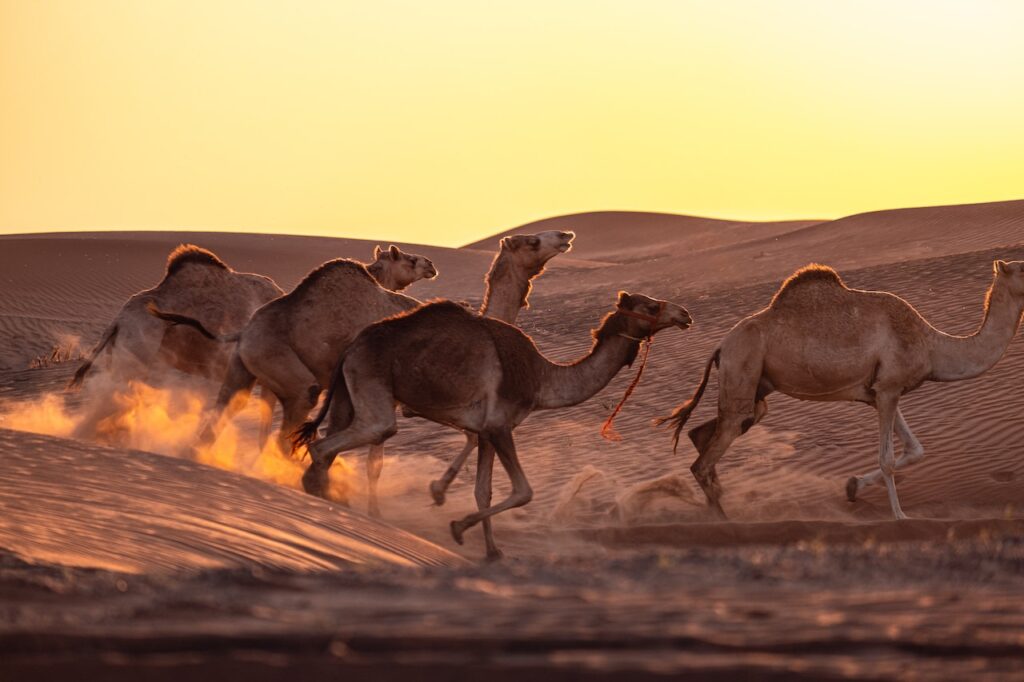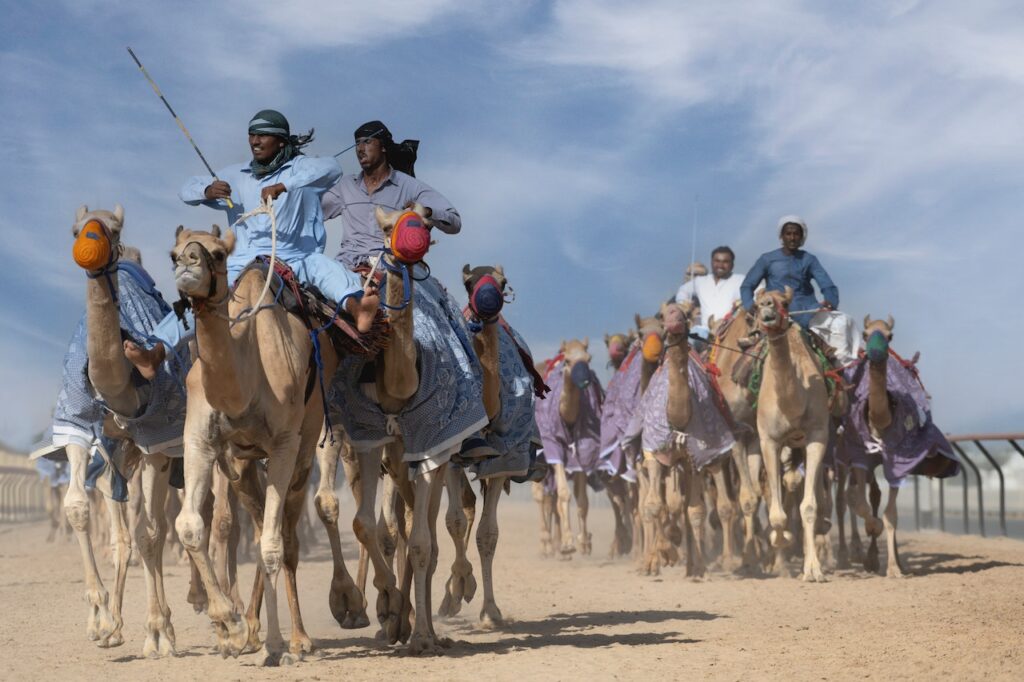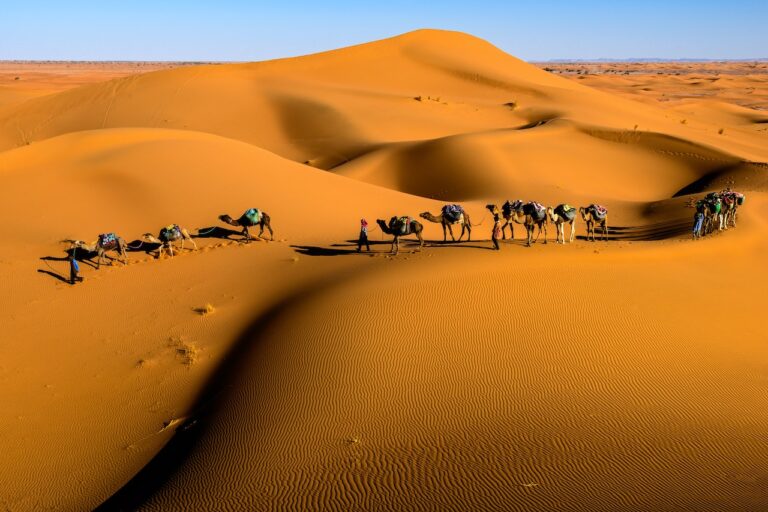Camels in the Desert
Camels in the desert are well-adapted to their environment by their thick coats which help them stay warm during cold nights and cool during hot days. They also have two rows of eyelashes that protect their eyes from sandstorms and long, curved eyelids that keep out wind-blown sand particles. In addition, they can go many days without water thanks to efficient kidneys that conserve as much moisture as possible when it’s scarce.
The desert is a harsh and unforgiving environment, with extreme temperatures and scarcity of resources. Despite this, one animal has been able to survive in the desert for centuries: the camel. These hardy creatures have adapted to survive in some of the most difficult conditions on earth.
Bactrian Camels in the desert
The Bactrian camel in the desert also known as Camelus bactrianus, is one of the most unique animals in the world. This species of camel is native to the steppes and deserts of Central Asia, and it has adapted to a life that is full of surprises. With its two humps on its back, thick fur designed for cold climates, and long legs that can carry it through some of the hottest temperatures on Earth, this animal has become an iconic symbol of resilience.
Bactrian camels are social animals who live in large herds and communicate with each other using moans and whistles. They have sharp eyesight which can help them spot predators from far away distances.
Dromedary Camels in the desert
The Dromedary Camel, also known as the Arabian camel, is a species of large even-toed ungulate found in North Africa and the Middle East. With its distinctive hump and long legs, this animal has become an iconic symbol of desert exploration and travel.
Though they are often associated with arid conditions, dromedaries are surprisingly adaptable to different climates. They can survive on little water or no food for several days at a time, allowing them to traverse vast distances across deserts and steppes. They even have specialized cells in their red blood that can absorb extra oxygen from the air! Their strong feet and wide hooves allow them to navigate rocky terrain with ease. These hardy animals can carry up to 600 pounds of weight while traveling 25 miles per day – making it a popular choice for transportation in many parts of the world.

Willd Bactrian camels in the desert
The Wild Bactrian Camel is an impressive and unique creature that has roamed the deserts of Central Asia for centuries. With its two humps, long eyelashes, and tolerance for extreme temperatures, this species has adapted to the dry conditions of its desert home in remarkable ways.
These wild camels in the desert are even more rare than their single-humped counterparts; they were almost driven to extinction in the late 1950s due to hunting and habitat destruction. Their population now stands at just over 800 individuals scattered across China, Mongolia and Kazakhstan. As a result, conservation efforts have ramped up in recent years to protect this amazing species from further decline.
The Wild Bactrian Camel is also notable for its ability to survive with very little water access – it can go up to six months without drinking.
Saharan One Humped Camel in the desert
The Saharan One Humped Camel has been an important part of North African life for centuries. This species of camel is indigenous to the Sahara Desert and its surrounding regions, and is known for its hardy nature in extreme temperatures. It is a strong animal, with a single hump on its back that stores fat which it can use as energy when needed.
Saharan One Humped Camels in the desert are able to survive without water or food for extended periods of time, making them ideal animals to be used as transport across the punishing desert terrain. They have long legs that give them an exaggerated stride length, allowing them to cover large distances quickly and efficiently when necessary. The camel’s unique digestive system also helps it process sparse vegetation into nutritious meals while travelling through remote areas.

Racing Camels in the desert
Racing camels is an ancient sport that dates back thousands of years. Originally occurring in Middle Eastern countries such as Arabia, Egypt, and Syria, racing camels in the desert has become a popular pastime for many. People from all over the world flock to witness camel races and take part in them. Racing camels can be a great way to show off your skills and make some extra money if you are the lucky winner.
To get involved in camel racing, one must first acquire a camel or rent one from a local breeder or owner. Then they must train their camel using various methods such as jogging around a track or taking it out for long rides on sandy terrain. Additionally, riders must know how to handle the camel while riding it at high speeds during races. Painstaking care and attention are necessary to successfully race camels competitively.
Conclusion
Camel species are fascinating creatures that have been used for centuries in various ways. These four-legged mammals, which inhabit deserts and other arid regions, come in many shapes and sizes. In recent years, researchers have studied the various camel species found around the world to gain insight into their behavior, physiology, and adaptability.
The two main types of camels in the desert are the one-humped dromedary camels found throughout Africa and Asia, and two-humped Bactrian camels found in Central Asia.

